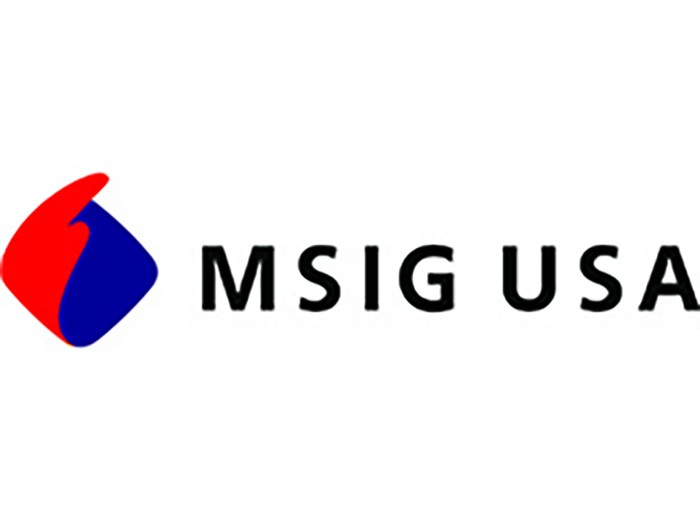How Employers Are Rejiggering Employee Benefits to Better Compete in the War For Talent

Looking at today’s labor market makes one think back to high school or college econ classes that introduced the relationship between supply and demand, and market clearing points.
In the world before COVID, you could get to the market clearing point where supply and demand crossed “simply with wages,” as Scott Hamilton, global managing director of human resources and compensation consulting for Gallagher’s benefit and HR consulting division, recalled.
That, he said, was where companies would dedicate the most resources – into making sure they offered competitive wages. Leaving the benefits, retirement, and other lifestyle needs to the side.
Since COVID prompted a dramatic shift in the priorities of both employees and leadership alike, reaching the clearing point for talent now requires far more than simply offering competitive wages.
Today’s is one of the most complex labor markets many business leaders have ever seen. And as Hamilton explained, “This is because we’ve got multiple clearing points.”
“When you think about multiple axis or multiple data points in this supply and demand relationship,” he said, “now it’s not just wages.”
On a clearing point basis, Hamilton has seen management today having to connect, “What’s the right amount of benefits; the right cost of the benefits; the right measures of the employee lifestyle that [they] are now bringing back post-COVID into the workplace?”
While each company will prioritize different aspects, at Gallagher, Hamilton has seen a combination of all these different clearing points being factored into the human capital strategy of most organizations aiming to attract and retain top talent.
Organizations are getting a lot of information from their workforce. They’re getting a lot of information from the people they are trying to recruit. “And that’s why this is so dynamic right now,” Hamilton said.
Companies are making real time decisions and changes to benefit programs; policies around leave and flexible scheduling; greater support for childcare — all in response, Hamilton has found, “to the fact that the employee lifestyle needs are at the forefront.”
“Companies are now having to buy the employee lifestyles versus just paying a wage.”
Re-Envisioning the Value Proposition
Against this backdrop of an array of clearing points, Gallagher recently released the fourth installment of its 2021 Workforce Trends Report Series, a compilation of findings gathered between December 2020 and March 2021 across industries – from health care to wholesale distribution to agriculture.
In “Organizational Wellbeing: Findings and Insights from the 2021 Benefits Strategy & Benchmarking Survey and 2021 HR Technology Survey,” Gallagher provides insight into how nearly 4,000 for profit and nonprofit organizations spanning the entire country are aiming to maximize their investments in HR technologies and comprehensive wellness strategies to “optimize the employee experience.”
The report illustrates how companies ranging in size from those with less than 100 full-time employees to larger organizations with over 1,000 full-time workers are adopting holistic approaches to support the wellbeing of their workforces: support stemming from a greater awareness of the physical, emotional, financial, and career-centered aspects of wellbeing.
Overall employers continue to place the most emphasis on physical wellbeing (55%) with financial wellbeing coming in just behind at 51%. However, the importance of the community aspects of emotional wellbeing (37%) and career wellbeing (36%) increased.
Clearly defined corporate social responsibility policies, one of four key components of community emotional wellbeing in Gallagher’s survey, was cited as a priority for a growing number of organizations with 14% expressing action in this area. Volunteer opportunities ranked top at 69%, as a community wellbeing effort considered to be sought-after by employees.
Support for the Social Aspects of Emotional Wellbeing
Likely driven by the stressors of the pandemic, Gallagher saw an 11-point increase in the number of organizations prioritizing the social aspects of emotional wellbeing (64%).
Ten social areas associated with emotional wellbeing were outlined in the report, including unique benefits such as adoption assistance as provided by 14% of surveyed organizations. Onsite meditation rooms, another new and unique effort toward social wellbeing, were offered by 13% of employers.
Perhaps the most expected social component of emotional wellbeing offered by employers, given pandemic conditions, was the ability to offer flexible work arrangements.
Not only has the geographic relocation of employees prompted the flexibility of employers, family and caregiving responsibilities of workers have also required organizations to be more flexible.

Scott Hamilton, global managing director, human resources and compensation consulting practice, benefit and HR consulting division, Gallagher
With millions of Americans experiencing heightened stress from having to oversee their children’s education at home and provide care for aging relatives, nearly a third of surveyed employers (32%) reported active employee attrition due to caregiving.
Over three-quarters (78%) of leadership teams expect that the weight of caregiving will be more damaging to retention rates among women (50%) than men (13%) in the workplace in the near future.
To support the work-life balance required by workers juggling increased caregiving responsibilities, 56% of employers now allow eligible employees to choose a flexible work arrangements – a 5-point increase from 2020.
Within one year, full-time telecommuting went up 23 points and is now offered by almost half of employers (49%). Part-time telecommuting is up as well with over half of organizations (54%) reporting such policies.
Looking After the Financial Wellbeing of Employees
Though wages and compensation are no longer the primary market clearing point that employers are aiming for when recruiting and retaining talent, as Hamilton noted, other aspects of financial wellbeing are being considered by employers.
Employer responses to the Gallagher survey indicated that financial wellbeing benefits are being offered primarily to decrease employees’ financial stress (31%) and to retain existing talent (28%).
The programs and resource options offered by most participating organizations included financial advisor sessions (63%), employee discount programs (58%) and financial literacy education (54%).
The Gallagher report also included recommendations for organizations looking to provide more fair and equitable financial wellbeing support to focus on addressing “the different needs and interests” of their unique employee populations.
Greater Investments in HR Technology
Coming out of an HR strategy survey that received responses from over 300 organizations between April and May 2021, the organizational wellbeing report also featured key recommendations on HR communication and technology investment.
The pandemic forced many organizations to invest in HR technology to support the significant work-from-home shift. Despite organizational financial capacity limitations in many cases, nearly a quarter (23%) of companies increased their investments in HR technologies to uphold new safety requirements.
Those with onsite essential workers especially invested in technologies such as touchless time and attendance tracking tools.
Looking toward 2023, over two-thirds of employers (69%) plan to increase their HR tech investments with the majority of that group expecting to spend part (15%) or all (48%) of the available funding on expansion; only 6% have targeted replacement alone.
Communicating a Shared Vision
Delving into the importance of having an HR communication strategy, the report also provided insight into how organizations are communicating their efforts toward creating a culture that prioritizes the work-life needs of their employees.
Whether an organization will see the full benefit of its investments in overall employee wellbeing and HR technology will be determined in large part by the effectiveness of its communication strategy.
The challenge of getting everyone from leadership to frontline workers looking toward a “shared vision of success,” as described in the report, requires advanced planning and strategic investments in communication.
The need for investments in advanced planning and coordination of communication strategies has become clearer over the past 2 years to employers. Responses to Gallagher’s HR technology survey showed a 7-point increase since 2019 of employers who have invested in creating a comprehensive communication strategy (22%).
“What all these communication efforts are trying to get to is a strengthening of the employer brand,” Hamilton said.
“And the idea that the employer is going to be seen internally and externally as being strong in all the areas around the HR strategy, around the HR programs, policies, benefits – all that rolls up into [an] employer brand picture of what [it’s like to work at this company].”
The report emphasized that attracting and retaining talent that performs depends on a “persuasive organizational brand and a positive work experience”, just as much as it does on competitive total rewards.
In today’s environment, Hamilton affirmed, if organizations are not making sure that they clearly communicate why working at their company is a great thing to do – from the collaborative and seamless onboarding to the solid benefits programs centered on multiple facets of wellbeing – they will not maximize the use of their investments. &










